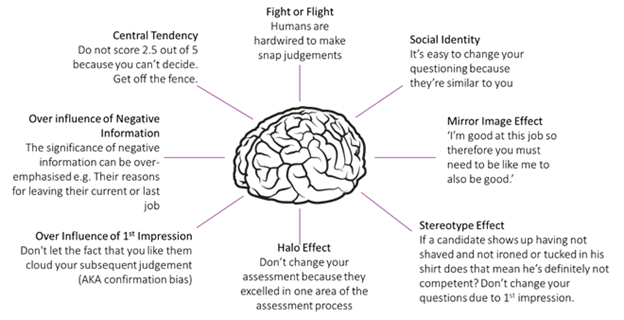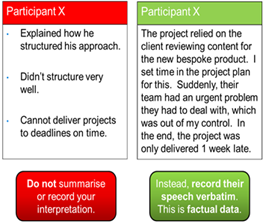At La Fosse, we know that having a diverse workforce is a key part of building a competitive team. Organisations need to be proactive in organising the training and processes which will allow them to reap these benefits which a diverse team brings.
One of the steps we’ve taken is facilitating a programme of Unconscious Bias training, designed by an Organisational Psychologist. From motivating our team (101 consultants), to evaluating our hiring process, we want to develop an inclusive culture of excellence -not only in our own business – but, with other businesses looking to strengthen their workforce by hiring more diverse candidates.
What is unconscious bias?
Unconscious bias occurs when people instinctively categorise others based on observable criteria such as age, gender or skin colour.
It is important to note that this isn’t intentional, and that everyone has unconscious biases. The brain receives information constantly, which is based on our experiences and what we read, hear or see in the media. It then uses shortcuts to speed up decision making, and this, is how unconscious bias becomes a by-product. In certain situations (like when you’re in danger and need to act fast), this is vital.
However, when applied to a hiring process, this can be paramount to discrimination if the bias relates to one of the 9 Protected Characteristics (Equality Act 2010). What’s more, it holds us back from objectively assessing who is the best person for the job, because we’re judging with our “gut feeling.”

How can we avoid unconscious bias?
Being aware of unconscious bias is the first step to mitigating it.
Then, you need to build a hiring process based on Objective Assessment, with four key stages: Observe, Record, Classify, then Evaluate.
Observe
A candidate’s behaviour is the sum of what they say and do. This is really only the tip of the iceberg, through which we understand their emotions, attitudes, beliefs, experiences and skills.
Assessors need to pay close attention to a candidate’s behaviour at each point of the interview process. The key is observing, whilst reserving judgement to avoid jumping to conclusions, or any of the other common mistakes interviewers make (figure 1.)
Record
Make relevant, factual notes of what the interviewee says, recording their speech verbatim rather than summarising or interpreting their speech. Avoid making a judgement about their response in the moment – this often leads to unconscious bias creeping in.

Classify
Based on your written evidence, numerically score the individual against each of the core competencies you are assessing them for. Try and think about each one in isolation rather than thinking about whether the collective sum means you’re going to put them through to the next stage or hire them.
Evaluate
Decide whether you want to hire them from the evidence.
Every organisation has a responsibility to proactively try and remove bias from their hiring processes. However, it’s not just the right thing to do – it’s also a better way to do business. Having a diverse workforce has proven links to financial performance and retention.
If you are an organisation looking to scale in the right way, and would like to share tips on what worked, we’d love to speak to you. Please reach out to Claudia at claudia.cohen@lafosse.com.